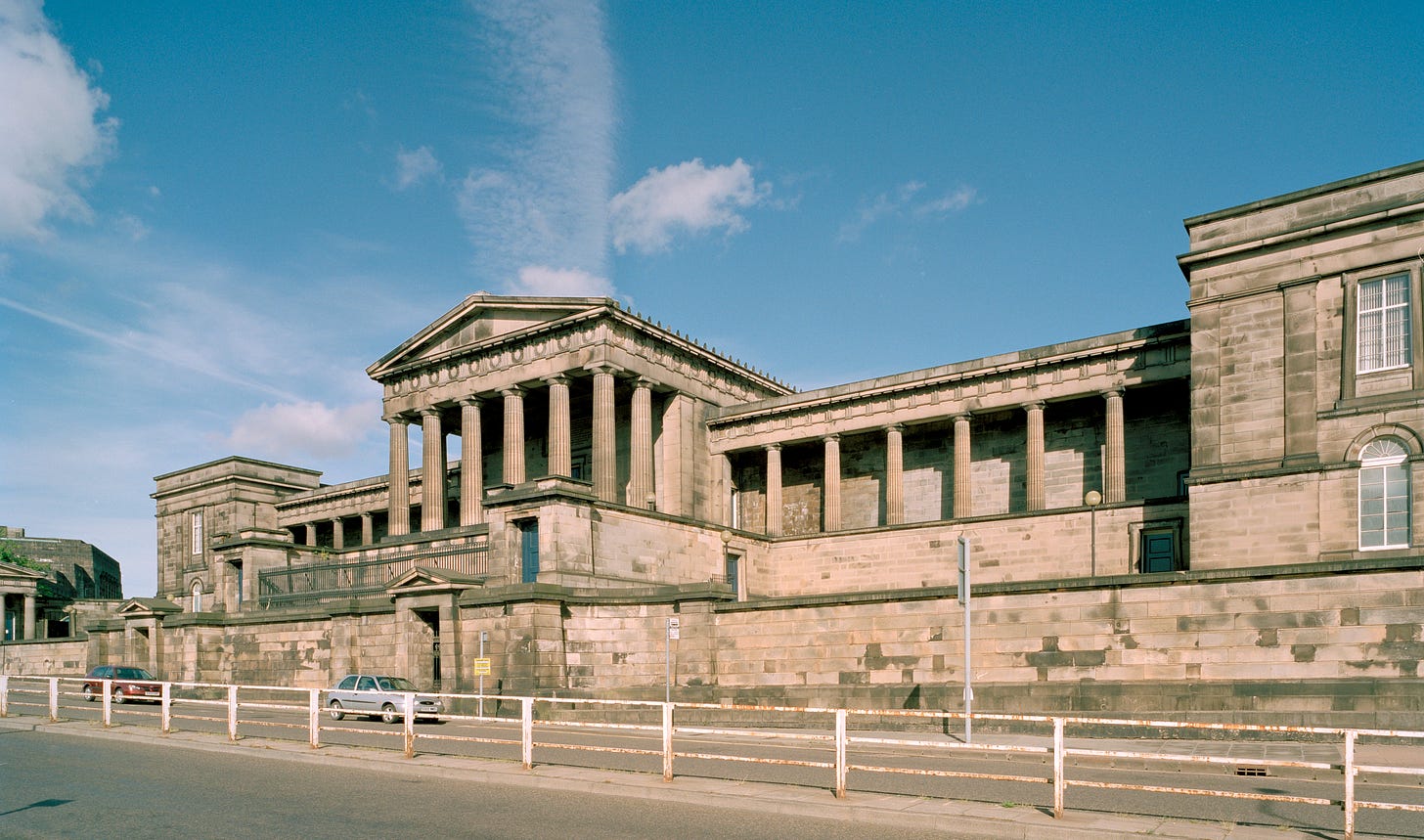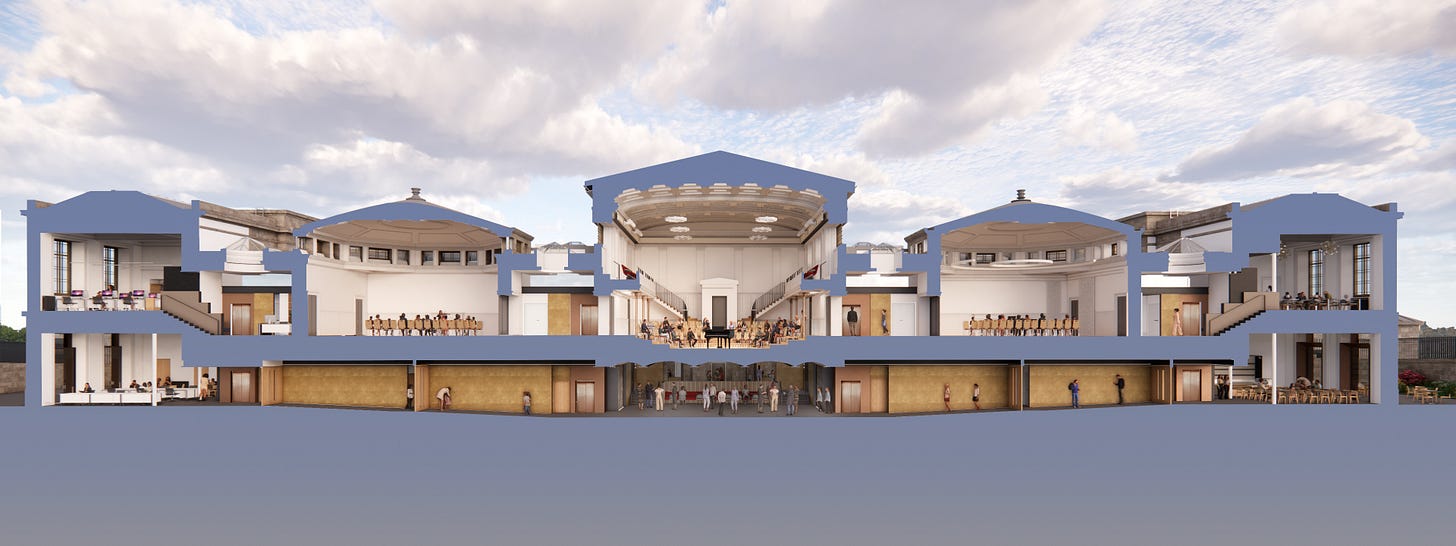‘We are creating a perfect way to bring all the strands of music in Scotland together’
Fifty-six years after the Royal High School moved out, city’s "masterpiece" building finally has a new purpose
It was a year of change. In 1968 mankind took a step closer to putting a man on the moon when Apollo 8 made ten lunar orbits, its crew becoming the first humans ever to witness the extraordinary sight of “earthrise.” The first flight of a Boeing Jumbo Jet changed air travel, and history was altered when two iconic Americans, Martin Luther King Jnr and Robert Kennedy, were assassinated.
In Edinburgh, there was change too, of a quieter, less dramatic kind as the playground at one of the oldest schools on earth fell silent when the Royal High School moved from its iconic building on Regent Road to a new home at Barnton.
Few would have believed the neo-classical building which looked out over the old town and Arthur’s Seat, enjoying the highest A-listed status, would have lain all but unused for more than half a century. Potential uses, some less welcome than others, came and went and still the magnificent edifice stood neglected.
Until this week, this is, when planning approval was finally achieved for a new use for the building which will breathe new life into this part of the city centre.
The Inquirer can confirm that work will begin on site this autumn to restore and transform Thomas Hamilton’s Greek revival masterpiece into a new National Centre for Music.
It is a prospect which fills Carol Nimmo, the new Chair of the Royal High School Preservation Trust, with joy. In her view harmony will be restored, if you’ll pardon the pan, when a fitting use for a building which bore the school’s Latin motto “Musis Respublica Floret” – broadly translated as “The State Flourishes by its Arts” – is finally achieved.
More than the building, she believes it will create a new and exciting chapter for the area, for the local community which has thrown its weight behind the plan, and for the city’s and region’s wider music community. “It will bring the building back to perfection as far as I am concerned.”
And she is uniquely placed to have a view – having moved from community activist and protestor, fighting against commercial plans that could have seen the old building flanked on both sides by modern development, to chairman of a board of trustees now determined to deliver a special new venue and centre of excellence to the Festival city.
Carol is not a musician. She is a local resident, a yoga teacher, who has been keenly interested in the site and proposed uses for it, and when a potential use as an “arts hotel” was initially proposed by the council in 2010, she was generally relaxed.
“Like a lot of people, I initially thought it would be fine, that a small hotel offering wonderful accommodation in a sensitive restoration might be a good use and would at least restore the building to life.”
Developers were appointed, experienced in dealing with listed buildings, and a conditional 125-year lease granted by the council, which retained ownership of the site. When the development proposals finally came forward in 2015, they saw Hamilton’s building flanked by six-storey modern accommodation wings. Carol added: “As soon as I saw the actual proposal I – and many local people – were absolutely against it. We now had a hotel with 120 bedrooms and two brand new wings. It did not seem to be sensitive to the building or the area, and we campaigned against it.”
Indeed they did, with Carol very much to the fore. This former Chair of the local residents’ association and also, later, the New Town and Broughton Community Council, was a passionate advocate for preserving the building, finding alternative – and in her view – better uses, and set about organising meetings, petitions, and attended every council planning meeting at which the building’s future was being considered.
“We did get organised, and we were pretty active in our campaign. There was a lot of concern in the area. At that stage I was not in any way involved in the preservation of the building, although I lived very close to it, walked past it pretty much every day, and like everyone else thought it a beautiful building that deserved to be used.”
They were not alone. Historic Scotland objected, as did Edinburgh’s doughty civic watchdogs the Cockburn Association, and the Architectural Heritage Society of Scotland plus more than 1700 individuals who sent in objections. And so did the council’s own planning department.
But what to do with the building remained a major issue to be resolved, and it was at this stage that the Royal High School Preservation Trust came forward with a proposal to use the building to house St Mary’s Music School, in a centre for music, with a plan that cost estimates ranging from £25million to £35million. American Philanthropist Carol Grigor, a generous supporter of the arts, came forward to underwrite the costs through her Dunard Fund.
Inevitably, at the planning meeting to consider the hotel proposal Carol was present. “I made a presentation, at which the proposal was defeated by just one vote.”
The hotel plans were quashed, the lease handed back, and the Trust was invited to take forward its plans, but these also foundered on the rocks of spiralling costs after it was revealed that the costs required had soared to £110 million.
The Trust’s benefactor provided funding to allow an alternative plan to be brought forward, a back-to-the-drawing board to reimagine the building as a National Centre for Music. Carol was invited to join the RHSPT as a Trustee last year, and then to become its Chair from June this year.
She added: “I think the plan which we have now, which has just been approved, is perfect. While we were not able to go forward with St Mary’s, in some ways that means that the situation both the Trust and St Mary’s School are now in is purer. Certainly in going back to focus on transforming the building into a National Centre for Music we have been able to focus much more on allowing Hamilton’s building to be seen as it was meant to be.
“We have also been able to create more green space, more garden, around the building which will enhance the space for the community.
“The more I learned about these plans the more passionate I became about the work of the Trust and the more determined I became to see it happen. We are saving the building in the most joyous way possible.”
The plans include a 300 seated concert hall, smaller performance space, plus areas for training and developing teachers of music, alongside a café and the landscaped areas and public garden.
Carol said: “We have already had a lot of discussion with the Festivals around how the new centre might work with them, and we believe that the maintenance costs of the building can be met through its use as a venue, and through the activities the building will house.
“We intend to have boots on site to start the work in the autumn.”
She was quick to praise the continued support for the project of Carol Grigor and the Dunard Fund. “None of this would have happened without the support, which is absolutely central to what has been achieved.”
Although not a musician herself, Carol professed a deep love of music and was brought up in a household in which music was always enjoyed. “We are creating a perfect way to bring all the strands of music in Scotland together for the world to enjoy. We can’t wait to get on with it.”







This is terrific news for the City along with the new concert hall, Carol Grigor will long be remembered for enabling these 2 world class venues to be created. They will also provide much needed performance space in the city centre to dilute the August Festivals wider across the city. Bravo